#enceladus
Text
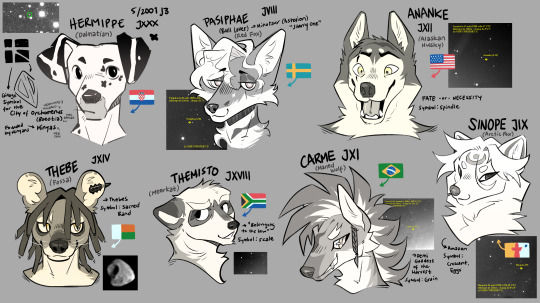
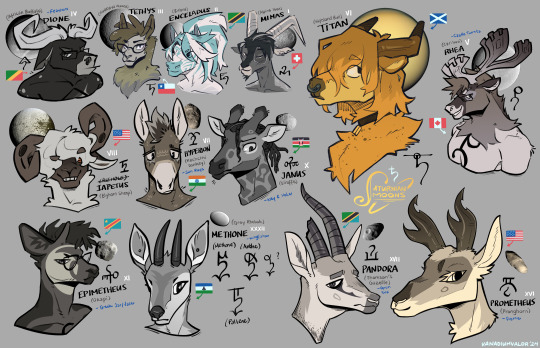
Working on the next chapter of Solar House! Had to pin down some designs for moon that will be appearing in the upcoming episodes <3
#personification#gijinka#astronomy#space#furry#furry art#sfw furry#digitalart#oc#originalcharacter#solarhouse#character design#milky way fandom#moon#titan#enceladus#mimas
42 notes
·
View notes
Text
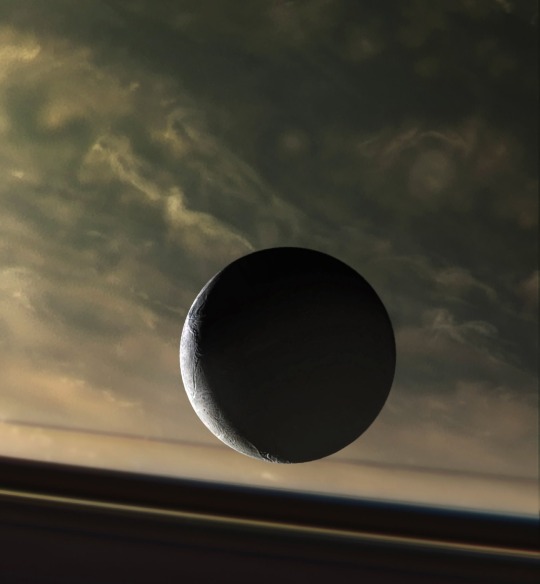
Saturn and Enceladus
Credit: Jason Major
2K notes
·
View notes
Text

Saturn's active, ocean-bearing moon Enceladus sinks behind the giant planet in a farewell portrait from NASA's Cassini spacecraft (September 13, 2017)
#astronomy#krakenmare#astrophotography#solar system#outer space#nasa#space#thank you nasa#saturn#Enceladus#cassini huygens#cassini#satellite#saturn moon#2017
248 notes
·
View notes
Text

Saturn's Cleanest Moon: Enceladus - November 25th, 1995.
"Enceladus orbits Saturn between the smaller Mimas and the larger Tethys. Enceladus is composed mostly of water ice and has the cleanest and purest ice surface in the Solar System. It's surface therefore appears nearly white. The surface also has many unusual groves and relatively few craters, like Jupiter's moon Ganymede. This indicates that the surface is young and/or newly reformed. To explain this, some astronomers speculate that Enceladus is susceptible to some sort of volcanic activity. Enceladus was originally discovered in 1789 by William Herschel."
199 notes
·
View notes
Photo

“ Imagine you are on Saturn's moon Enceladus “
// Astronomy Hub
#space#planets#earth#moon#Mars#Venus#Jupiter#mercury#saturn#enceladus#SolarSystem#galaxy#Galaxies#MilkyWay#universe#aesthetics#wanderlust#explore#follow#discover
471 notes
·
View notes
Text

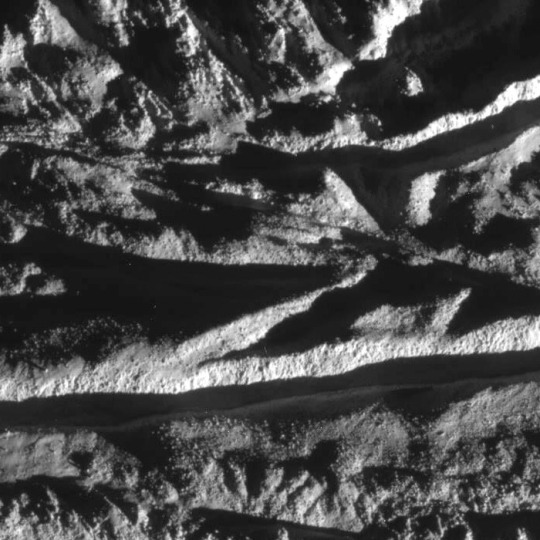
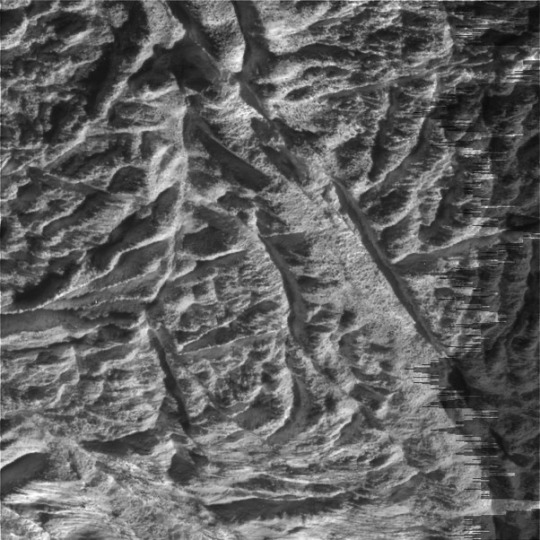
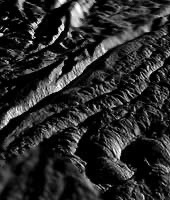

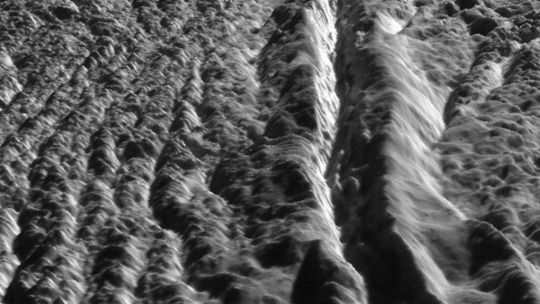
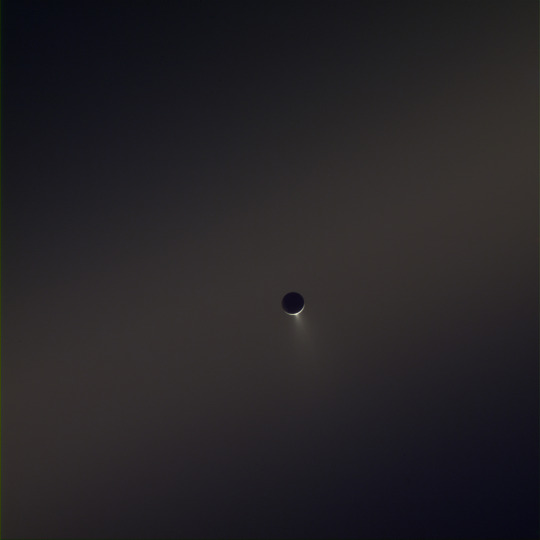
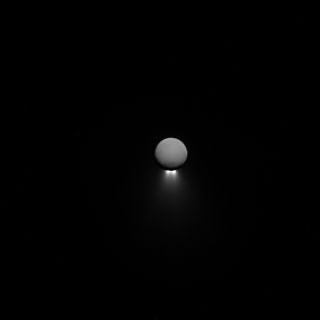

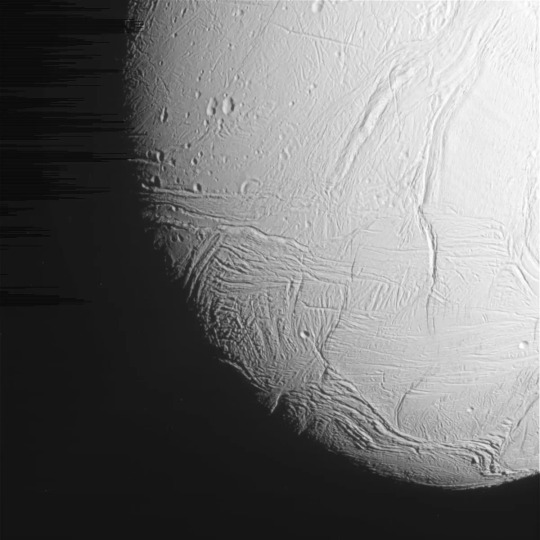
Looking down at a plume on Enceladus. 30 miles above its surface. Saturns moon.
#astronomy#astronomers#nasa#universe#astrophotography#nasa photos#astrophysics#outer space#nasawebb#hubble space telescope#saturn planet#planet saturn#saturns rings#enceladus#astronomy facts#astrography#astro community#solar system#planetary science#space science#science#planetary nebula#astro notes#astro observations#astroblr#planets#upper moons
80 notes
·
View notes
Text
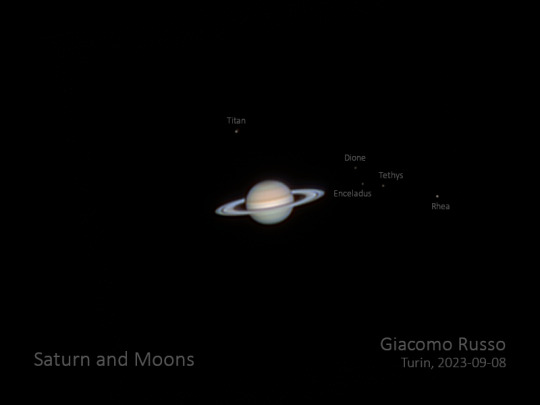
Saturn and a few of its moons on September 8, 2023 // Giacomo Russo
Those moons include: Titan, Dione, Enceladus, Tethys, and Rhea
#astronomy#astrophotography#solar system#planet#gas giant#saturn#saturn's rings#moon#saturnian moons#saturn's moons#titan#dione#enceladus#tethys#rhea
116 notes
·
View notes
Text
Found on Saturn's moon Enceladus, the discovery raises the possibility that life could exist on the tiny frozen satellite.
Compounds containing phosphorous were identified in vapor spewed out by Saturn's ocean moon Enceladus – the Solar System body with the largest ratio of liquid water by mass – by an international team led by planetary scientist Frank Postberg of the Free University of Berlin in Germany. The amounts found suggest there could be abundances more than 100 times higher than we have here on Earth.
This means we have a new clue for understanding ocean worlds in the Solar System and beyond. And since phosphorus is one of the six elements considered critically crucial for life based on water and organic chemistry, its discovery significantly raises the prospects for life on Enceladus.
"Phosphorus is an element essential for planetary habitability, but to date, it has not been detected in an ocean beyond Earth. Previous geochemical modeling suggested that phosphate might be scarce in the ocean of Enceladus and other icy ocean worlds," the researchers write in their paper.
Continue Reading
183 notes
·
View notes
Text
The ring swirling around Saturn consists of chunks of ice and dust. Saturn itself is made of ammonia ice and methane gas. The little dark spot on Saturn is the shadow from Saturn's moon Enceladus 🪐
📷: Hubble Heritage Team (AURA/STScI/NASA/ESA)

#saturn#nasa#astronomy#solar system#astrophotography#astrophysics#hubble#james webb images#gas giant#enceladus#stsci#physics#space exploration
162 notes
·
View notes
Text
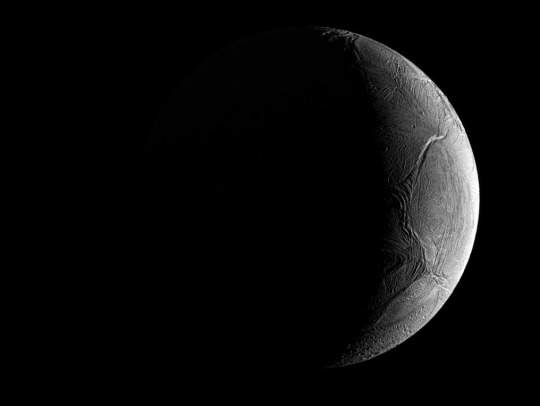
SPACEMAS DAY 20 ✨🪐🌎☄️☀️🌕
‼️ I can’t believe there’s only 5 more days of this!!! Make sure to send me any of your favourite images for a chance to be featured!! ‼️
Peering from the shadows, Saturn’s inner moon Enceladus is front and centre in this image from the Cassini spacecraft. North is up in the scene captured during November 2016 as Cassini's camera was pointed in a nearly sunward direction about 130,000 kilometers from the moon's bright crescent. In fact, the moon reflects over 90 percent of the sunlight it receives, giving its surface about the same reflectivity as fresh snow. Only about 500 kilometers in diameter, Enceladus is a surprisingly active moon. Data and images collected during Cassini's flybys have revealed water vapor and ice grains spewing from south polar geysers and evidence of an ocean of liquid water hidden beneath the moon's icy crust.
Image Credit & Copyright: NASA
#astronomy#space#science#universe#Cassini#moon#Saturn#enceladus#Saturn moon#icy#reflective#surface#sun#sunlight#Cassini space craft#Cassini Saturn#follow#like#reblog#the first star#the first starr#thefirststar#thefirststarr#nasa#apod#tumblr#blog#space blog#spacemas#day 20
26 notes
·
View notes
Text

Enceladus - taken by the Cassini orbiter on January 30 2017.
NASA/JPL-Caltech/SSI/Kevin M. Gill
993 notes
·
View notes
Text

It’s day 3 for 12 days of starry facts!
Today’s fact: Enceladus
#cosmic funnies#astronomy#space#cute#science#kawaii#stars#webcomic#solar system#enceladus#saturn#christmas#educational#facts#fun facts
203 notes
·
View notes
Text
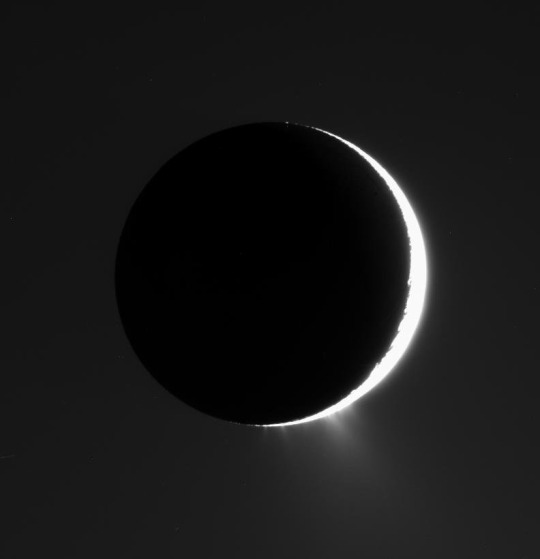
Enceladus nearly in front of the Sun (September 3, 2007)
#krakenmare#astronomy#solar system#astrophotography#outer space#nasa#space#thank you nasa#saturn#cassini#Enceladus
51 notes
·
View notes
Text
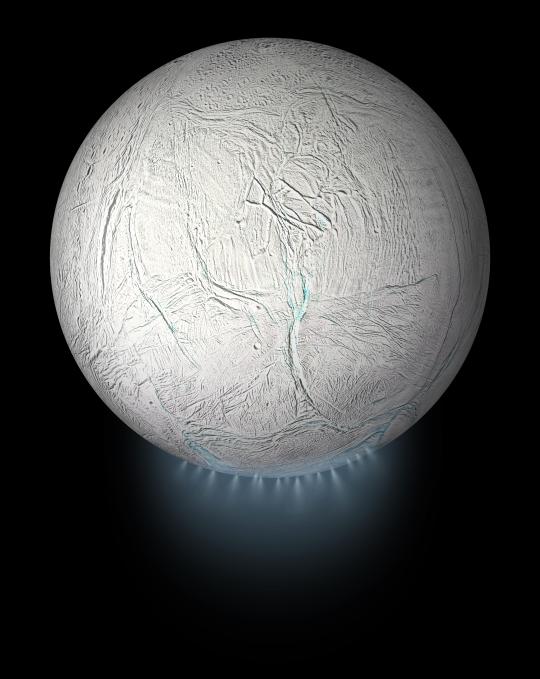
Enceladus Global View with Plume (Artist's Rendering)
27 notes
·
View notes
Text
#enceladus#saturn planet#plumes#planet saturn#saturns rings#saturn#astronomy#astronomers#nasa#universe#astrophotography#nasa photos#astrophysics#outer space#nasawebb#hubble space telescope#video#nasa jpl#planetary nebula#outer solar system#solar system#astronomy facts#astrography#i love astronomy
40 notes
·
View notes
